Knowing when and how to hunt over scrapes is a pivotal part of being a successful whitetail deer hunter. These markings are utilized by bucks in a way that acts as a calling card for deer in a specific area and they can be extremely productive for hunters who know how to use them.
There is an element of mystery associated with scrapes as hunters can’t always tell what type of buck created the marking without the aid of a trail camera. Nevertheless, hunting scrapes at the right time can be the ticket to bagging a mature buck when all other methods of approaching the deer prove to be fruitless.
In this article, we’ll cover how bucks utilize scrapes in relation to the specific time of year, as well as certain times of the day during deer season. I hope to provide some insight as to the best ways to approach hunting over a scrape, and also give hunters an idea of when to lay off and stay away from them as well.
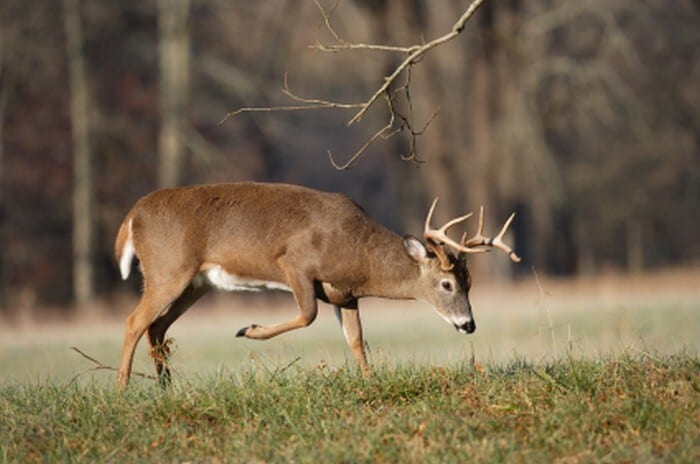
When Will Bucks Start Making Scrapes?
Scrapes are one of the most talked-about aspects of whitetail deer hunting. While there is plenty of great information that can be found online regarding scrapes, there are a lot of instances where misinformation is spread and sometimes advocated by what most hunters would deem to be reputable outdoorsmen and women in the hunting industry.
Seeing a fresh scrape is certain to inspire a sense of excitement in hunters of all skill levels as it is a sure sign that a buck has been in the area—and that he is likely to return on a semi-regular basis to check the scrape again at some point. So this begs the question, when is the best time to hunt over a scrape?
Hunters should start seeing more signs of buck activity in the form of scrapes on their given hunting location around early to mid-October throughout much of the United States. While bucks are known to make scrapes at virtually any time of the year, this kind of activity will increase when the bucks’ testosterone levels are increasing just before the rut goes into full effect.
This is a time when bucks are becoming more active and preparing to draw a line in the sand, so to speak, when it comes to their own personal territory. Bucks will start to create these kinds of markers as they instinctively know that the rut is set to kick off in a matter of a few weeks, depending on where you’re located throughout the country.
Determine the Freshness of the Scrape First
One of the key aspects to focus on when it comes to scrapes and how you should approach them is freshness. If you come across a scrape in your hunting land, take your time and look it over thoroughly to determine whether or not it is a fresh scrape, or if it has been made more than a few weeks ago. Focusing your efforts on hunting over an old scrape will likely turn out to be a huge waste of time as bucks may be on the move in your area and turning most of their attention towards their female companions instead of scrapes.
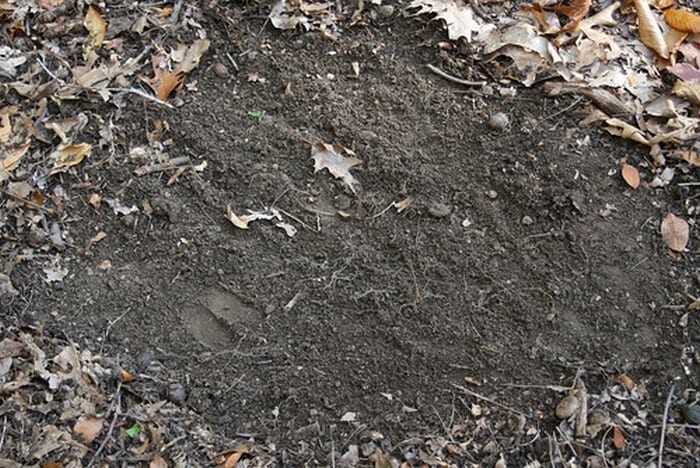
Be sure to look at the overhanging branches above the scrape to see if they have recently been chewed or twisted. Most skilled hunters are able to tell when a small tree branch was worked by a buck and make a fairly accurate assessment as to when the buck chewed on the ends of the branch or used its antlers to twist and break the ends.
It’s also important that you closely inspect the ground where the buck has pawed at the scrape and pay attention to whether there are any leaves and other debris that have fallen into the scrape area since the buck made the marking. A fresh scrape will have very few if any leaves in the scrape and an old one will have a decent amount of debris in the area.
When to Start Looking for Scrapes?
The most important question any hunter can ask pertaining to scrapes is likely going to be “when is the best time of year to hunt over scrapes?”
However, it can be just as important to understand when you should start looking for scrapes on your hunting land. If you are able to find scrapes or scrape lines early shortly after they’ve been created by bucks in your area, you can usually work to stay one step ahead of the buck you’re after.
You should start looking for scrapes on the property you are hunting in early October. Once you find the first scrape or scrape line, you should work to connect the dots and try to make an assessment as to where the buck is headed and what two points of interest the scrape is made to connect.
In most cases, scrapes are made in areas very close to where a buck is either feeding or bedding. If you are very familiar with the specific area you’re hunting, you should try to look for areas where bucks might bed down in thickets and other sections that offer good amounts of cover and a higher vantage point than the land surrounding the bedding area.
In addition to finding and pinpointing the particular bedding area in your neck of the woods, it’s also important to try and search out the various food sources nearby. If you can locate the bedding areas and determine which food supplies a buck is likely to be using in early to mid-October, you’re very likely to find scrapes along the trails or edges of thick cover and hardwoods.
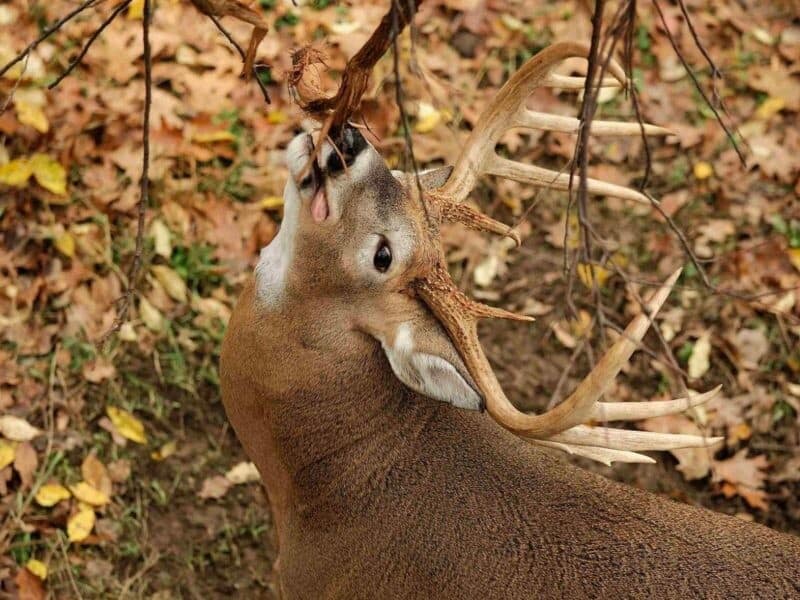
Best Time of Year to Hunt Over Scrapes
According to most experienced whitetail deer hunters, hunting over scrapes is an excellent strategy just before the rut starts to kick in. For most of the United States, bucks will start to engage in behavior that is consistent with their usual rutting patterns around the beginning of October or toward the end of the month.
When it comes to hunting over scrapes, freshness is the most important aspect of the entire conversation. If you find a fresh scrape in early October or near the middle of the month, the best time to hunt over this particular buck sign is sooner rather than later. A buck that takes the time to create a scrape is likely to come back and check it within a few days, or sooner in some cases.
It’s a mistake to think that you can simply make a note of this scrape and hunt over it once the rut is truly beginning. Bucks typically make scrapes just a few weeks before they will begin to chase after does as a means to tell other bucks in the area “this is my turf.” Once they begin to go into estrus, bucks will mostly lose interest in scrapes as they will focus most of their efforts on finding these does that are in heat and mating with them.
Bucks will, however, come back and check these scrapes if they are in the area. Most hunters swear by the process of creating their own mock-scrapes in order to draw the attention of bucks. There is little scientific evidence to back up the idea that mock-scrapes are just as productive as naturally occurring scrapes.
Most hunters will have the most success hunting over scrapes in the month before the peak of the rut in their particular area.
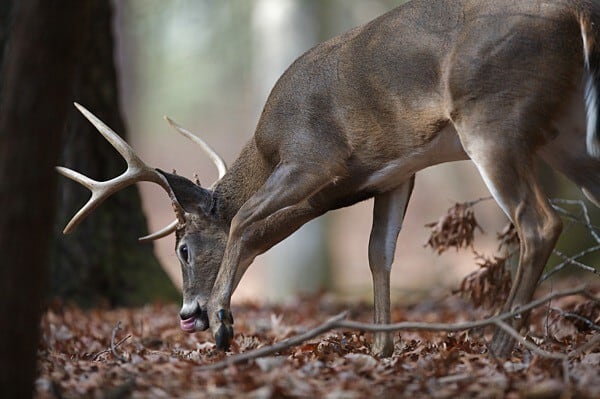
Best Time of Day to Hunt Over Scrapes
Most scrapes are going to be worked by bucks under the cover of darkness. Obviously, hunters can’t legally hunt during this time, so the next course of action is to catch an unsuspecting buck at or near a freshly-made scrape in the early morning hours. If you plan to hunt over a particular scrape or a scrape line, it’s best to do so in the early morning.
Be sure to get into your stand well before daylight in order to avoid disturbing any bucks as they make their way along the trail where the scrape is located. It is very likely that the buck has spent the night roaming around the general area, checking scrapes, and feeding on various food sources.
The time for hunting over scrapes successfully is actually a shorter window than most hunters realize. Bucks will make scrapes in the early portion of the hunting season, but they will quickly turn most of their focus toward chasing after does in estrus once the rut kicks in full force.
Buck Behavior Around Scrapes
The subject of buck behavior around scrapes is one that could be discussed in an article of its own as there are many different points to consider. Bucks will react in a variety of ways to other deer visiting their scrapes and many mature bucks are known to make use of scrapes more heavily than younger bucks.
Bucks will begin to make scrapes more aggressively once their testosterone levels increase as the rut comes closer. Scrapes will begin to appear more frequently in October and you can expect other bucks to leave their scent in an already-made scrape in most cases. Some hunters can draw bucks in and keep their attention for a few days through the use of a mock scrape and the right combination of buck urine or doe estrus.
What is a Scrape Line?
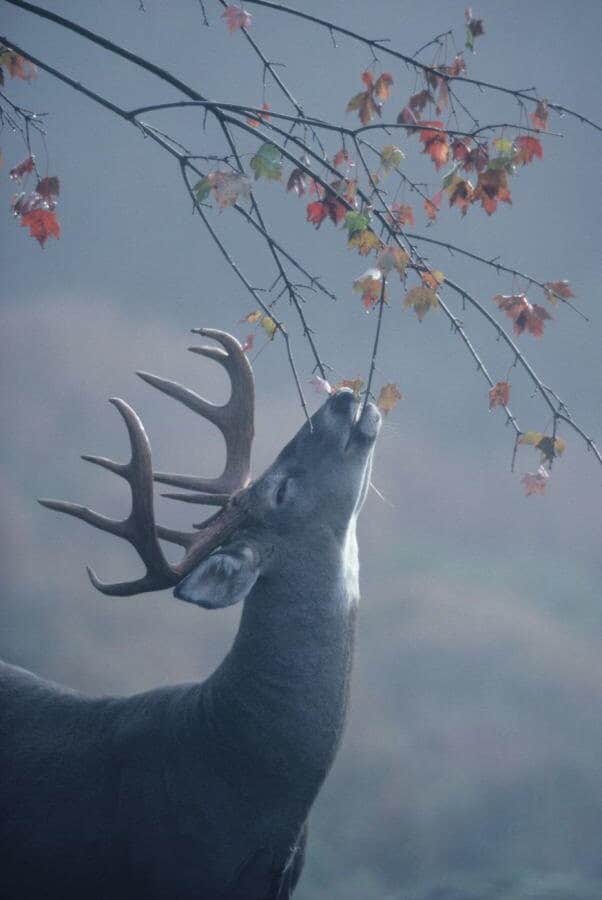
A scrape line is one of the biggest signs that bucks are living in a specific area and that they’re also frequently using a certain lane of travel back and forth from their bedding area to their chosen food source. Bucks will create scrapes along the way from their bedding area to a particular food source in intervals of about 20 to 50 yards in most cases.
Bucks will usually create a scrape line sometime around early to mid-October and will continue to use and check these scrapes up until the rut kicks into high gear toward the middle of November.
How to Hunt a Scrape Line
If you plan to hunt over a scrape line, it’s best to do so during the morning hours as most bucks will work their scrapes during the night and move toward their bedding area shortly after the sunrise. In some cases, mature bucks will actually show up during the mid-morning hours to check their scrapes during late October or early November.
It’s best to hunt over a scrape line in the few short weeks just before the rut begins in your specific area. For much of the United States, the rut fully begins in the middle of November, so it’s best to hunt over scrapes and scrape lines in the month before the rut kicks off.
Conclusion
There is a lot of information related to scrapes that can be found online and wildlife biologists are still working to understand the subtle nuances of just how whitetail bucks utilize scrapes in a way to communicate their presence with one another. Regardless of your level of understanding when it comes to scrapes and when to hunt over them, the information in this article should help you get off to a productive start as it relates to scrape hunting in the next season.
Thank you for reading my article! I hope you enjoyed it, and if you have any questions or feedback, please send me an email at [email protected]. If you want to learn more about me or Omega Outdoors, visit my About Page. Otherwise, I hope you have a great day, and check out some of my other articles while you’re here!

